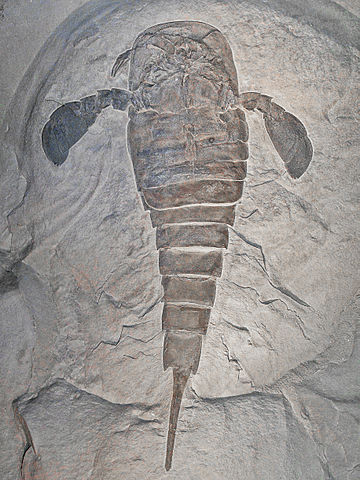Eurypterids, commonly known as sea scorpions, were a group of aquatic arthropods that existed from the Ordovician to the Permian periods, approximately 460 to 248 million years ago. Tracing the ancestry of giant sea scorpions involves exploring their evolutionary history. Here’s an overview:
Page Contents
Toggle1. Early Arthropods:
- Paleozoic Era: Eurypterids belong to the broader group of arthropods, which includes insects, arachnids, and crustaceans.

- Ordovician Origins: The earliest eurypterids appeared during the Ordovician period, marking their ancient lineage within the arthropod phylum.
2. Diverse Forms:
- Morphological Variations: Eurypterids exhibited a wide range of morphological adaptations, from smaller, shrimp-like forms to the larger, more iconic sea scorpions.
- Habitats: They occupied various marine environments, including shallow coastal waters and deeper seas.
3. Key Characteristics:
- Chelicerae and Prosoma: Eurypterids had chelicerae (appendages near the mouth) and a prosoma (head region) similar to those seen in modern arachnids.
- Gills: Some species had specialized structures for breathing in water, such as book gills.
4. Evolutionary Trends:
- Size Increase: Eurypterids underwent size evolution over time, with some later species reaching impressive sizes.
- Adaptations for Predation: The development of larger sizes, more robust chelicerae, and a strong exoskeleton suggests adaptations for efficient predation.
5. Giant Sea Scorpions:
- Devonian Period: The largest eurypterids, often referred to as giant sea scorpions, lived during the Silurian and Devonian periods.
- Example: Jaekelopterus rhenaniae is one of the largest known eurypterids, with estimates suggesting a length of over 8 feet (2.5 meters).
6. Paleoenvironmental Context:
- Global Distribution: Eurypterids were distributed globally, with fossils found on multiple continents.
- Adaptation to Diverse Habitats: Their success and diversity suggest an ability to adapt to various marine environments, from coastal regions to deeper waters.
7. Ecological Roles:
- Predators and Scavengers: Eurypterids likely played roles as both predators and scavengers in marine ecosystems.
- Top Predators: Larger species, especially giant sea scorpions, may have been apex predators in their ecosystems.
8. Reproductive Strategies:
- Oviparity: Some eurypterids are believed to have laid eggs, exhibiting an oviparous mode of reproduction.
- Brood Care: Evidence of parental care, such as the preservation of juveniles with adults, suggests some level of protection and care for offspring.
Tracing the ancestry of giant sea scorpions involves examining the fossil record, understanding their morphological adaptations, and placing them in the broader context of arthropod evolution. The eurypterids, with their diverse forms and evolutionary trends, represent a fascinating chapter in the history of ancient marine life.











